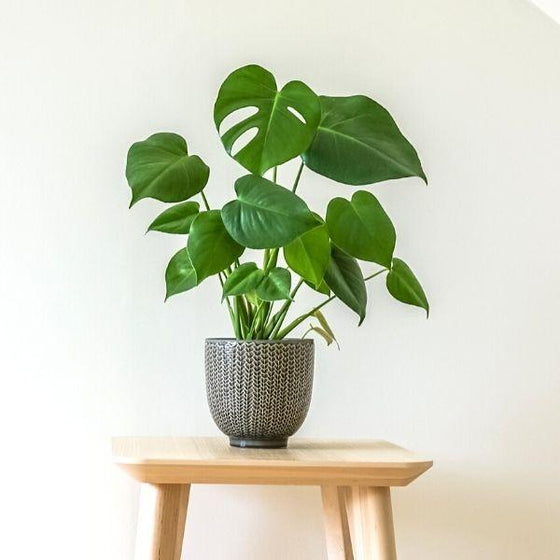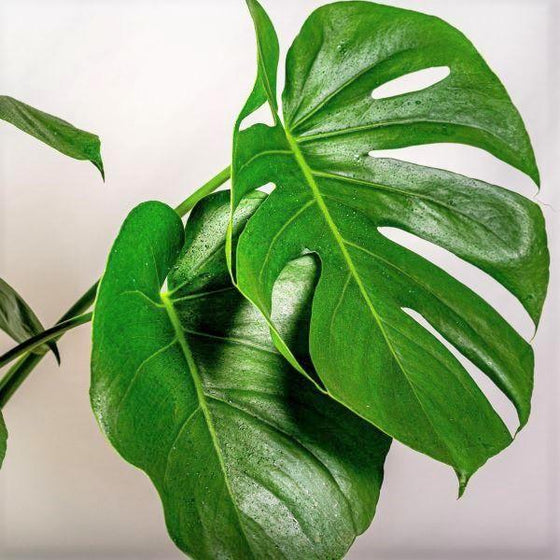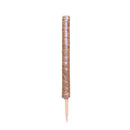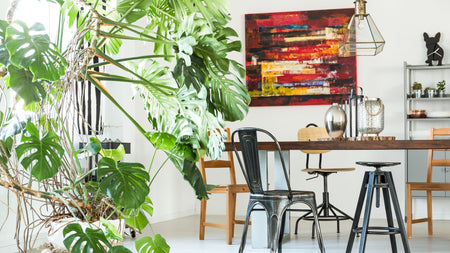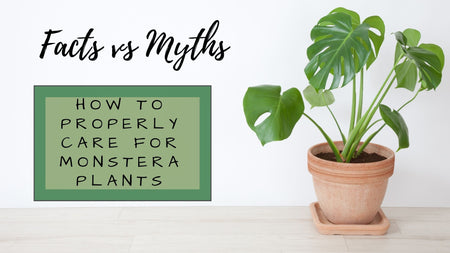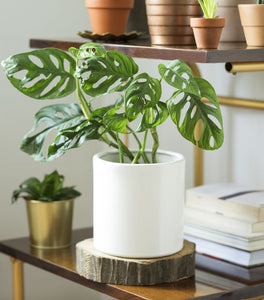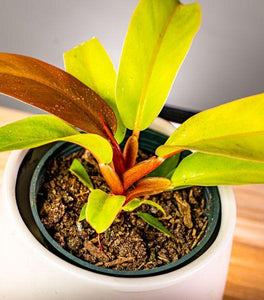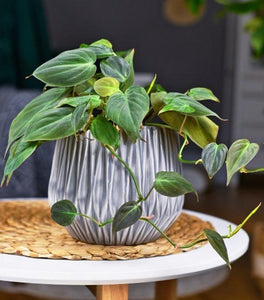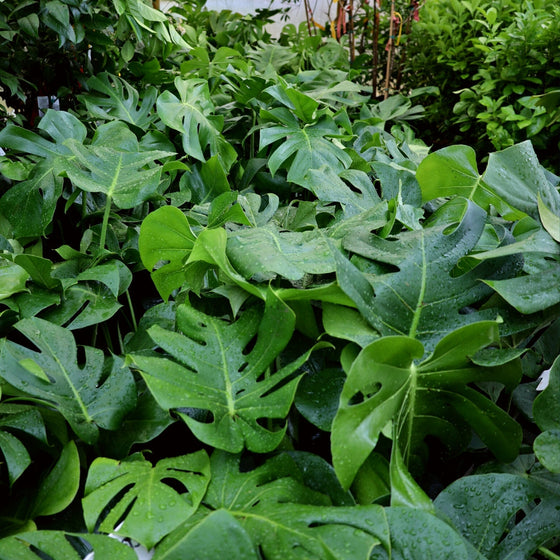
Images Depicted Range in Maturity & Container Size
Pots & Decorations Not Included Unless Otherwise Stated
Bold Tropical Foliage That Makes Any Space Feel Alive
A Sculptural, Iconic Indoor Statement Plant
Few houseplants are as recognizable or beloved as Monstera deliciosa. Its broad, glossy green leaves develop dramatic natural splits and holes — known as fenestrations — that create an unmistakably tropical look. As it matures, the plant becomes architectural and expressive, adding life, movement, and style to any interior.
Monstera works effortlessly in modern, boho, minimalist, tropical, and Scandinavian spaces alike. Whether placed in a bright living room, bedroom, office, or loft, it instantly softens harsh lines and brings warmth and natural texture into the room.
Fast-Growing, Attention-Getting, and Surprisingly Easy to Care For
While it may look exotic, the Monstera is exceptionally adaptable and beginner-friendly. It grows steadily throughout the year, producing new leaves that unfurl into increasingly larger, more intricate shapes. Even in average home lighting, it stays lush and full, requiring only moderate watering and occasional rotation for even growth.
With only a bit of bright, indirect light, the foliage develops deeper fenestrations over time — rewarding patience with dramatic beauty.
Flexible Light Requirements
Monstera performs best in bright, indirect light, but it also tolerates medium-light interior rooms. Near a bright window (but not in direct, harsh sunlight), it will grow faster and produce larger, more dramatic leaves. In medium light, it grows more slowly but remains attractive.
This makes Monstera ideal for apartments, homes with filtered daylight, and large interior spaces needing a bold, living focal point.
Naturally Air-Purifying and Humidity-Enhancing
Like many tropical foliage plants, Monstera helps purify indoor air and gently increases ambient humidity. This contributes to more comfortable air quality — especially in dry, HVAC-powered rooms. Place it in living rooms, home offices, dens, or bedrooms for a refreshing, grounding presence that connects indoor spaces back to nature.
If you fell in love with the Swiss Cheese Plant, check out its sister—the Swiss Cheese Vine! Botanically referred to as Monstera adansonii, this tropical plant is like a Deliciosa Monstera shrunk down and vining.
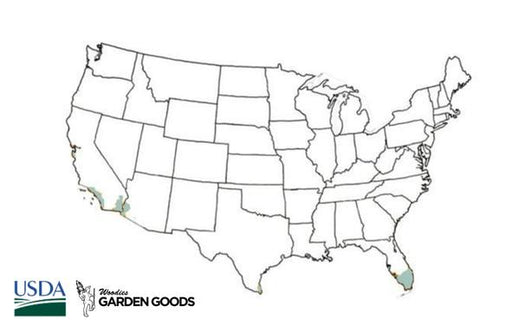
| Hardiness Zone: | 10–12 outdoors; houseplant elsewhere |
|---|---|
| Mature Height: | 3 to 8 Feet with support |
| Mature Width: | 36 Inches |
| Classification: | Tropical Houseplant |
| Sunlight: | Bright, indirect to medium indirect light |
| Habit: | Upright, Climbing if given support |
| Flower Color: | Rare indoors; grown for foliage |
| Foliage: | Dark green heavily dissected |
| Soil Condition: | Well-draining indoor potting mix with perlite or bark |
| Water Requirements: | Water when top 1–2” soil is dry |
| Uses: | Living rooms, dens, offices, corner statement plant, container décor |
How to Care for Monstera deliciosa (Swiss Cheese Plant)
Be sure to read our planting instructions to ensure a healthy and happy Monstera deliciosa for years to come!

How should I plant Monstera deliciosa?
Choose a pot with drainage holes and use a chunky, well-draining potting mix containing peat/coir, perlite, and bark to mimic tropical forest soil. When repotting, set the root ball so the crown remains slightly above soil level, fill in gently, and water to settle. Give your Monstera space to grow — consider adding a moss pole or support stake later, as the plant naturally climbs in the wild.
How often should I water Monstera deliciosa?
Water when the top 1–2 inches of soil are dry. Monsteras prefer deep, thorough watering followed by full drainage; avoid letting the plant sit in water. The leaves will flatten or curl slightly when thirsty and perk back up once watered — making Monstera forgiving for new plant owners.
When should I fertilize Monstera deliciosa?
Feed monthly from spring to early fall using a balanced liquid houseplant fertilizer diluted to half strength. This supports new leaf development and encourages larger split leaves. Pause or reduce feeding in winter when daylight levels decrease and growth slows naturally.

When and how should I prune Monstera deliciosa?
Prune to shape or manage size by cutting stems just above a leaf node. Remove yellow or aging leaves at the base. If the plant stretches toward light, rotate weekly and consider providing a vertical support to encourage fuller, more upright growth.

